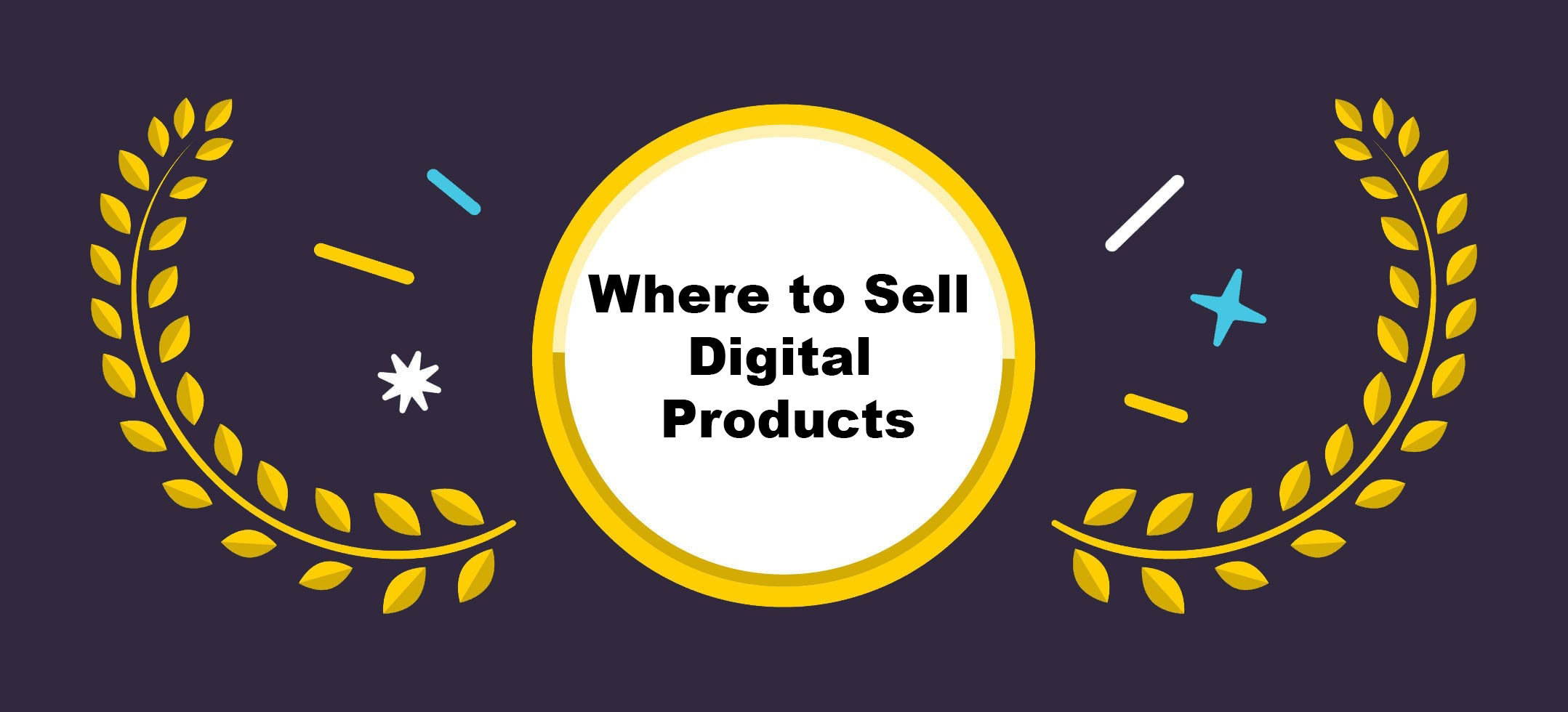Selling digital products is one of the easiest ways to scale an online business.
Whether you’re offering print-on-demand design files, ebooks, templates, or courses, the potential for high profit margins and low overhead is real—as long as you’re using the right platform.
I’ve personally tested dozens of tools over the years, and in this article, I’ll walk you through where to sell digital products, what each platform really offers, and how to avoid the common mistakes people make when choosing where to list.
If you’re in ecommerce or print-on-demand, these platforms can unlock passive income streams without more shipping headaches.
Let’s get into it.
What Counts as a Digital Product?
Digital products are anything you can deliver electronically with no physical fulfillment.
The great thing about them is the margins. You create something once and can sell it hundreds or thousands of times with little to no extra work.
Examples of digital products:
- Ebooks or downloadable guides
- Canva, Photoshop, or Illustrator templates
- Print-on-demand assets like wall art or sticker sheets
- SVG and PNG files for Cricut/Silhouette machines
- Spreadsheets, Notion templates, or planners
- Fonts, icons, design packs
- Music, sound effects, voiceovers
- Online courses and video lessons
For print-on-demand sellers, digital files like planners, mockups, and design templates let you add new revenue streams without dealing with inventory or shipping.
And with the right platform, setup can take less than a day.
Before You Sell: How to Choose the Right Platform
Before jumping into a platform, ask yourself these three questions. They’ve saved me a ton of wasted time and money:
1. Where is your customer already shopping?
Don’t fight the current. If your target customer buys SVGs on Etsy, start there.
2. Do you want speed or control?
Marketplaces like Etsy and Gumroad bring traffic but control your store. If you want to own your customer data and branding, go with something like Shopify or WooCommerce.
3. Are you trying to build a brand or just make quick sales?
If you’re just starting out, marketplaces are great for validation. But once you’re ready to grow long-term, owning your store makes more sense.
Here’s a quick breakdown:
| Platform Type | Traffic Included | Brand Control | Fees | Setup Difficulty |
|---|---|---|---|---|
| Marketplaces | Yes | Low | Medium-High | Easy |
| Hosted Stores | No | High | Monthly fees | Moderate |
| Self-Hosted Stores | No | Highest | Low-Medium | Technical |
Start with a platform that fits your goals, and don’t overcomplicate it. You can expand to other platforms later once you’ve found traction.
The 8 Best Places to Sell Digital Products (Ranked)
Digital Product Platforms Comparison Table
| Platform | Starting Cost | Transaction Fees | Best For |
|---|---|---|---|
| Shopify | $39/month | 2.9% + $0.30 (Shopify Payments) | Store owners wanting full control, branding, and scalability |
| Etsy | $0 + $0.20 per listing | 6.5% + 3% + $0.25 (US payment fee) | Beginners selling printables, SVGs, or POD digital files with built-in traffic |
| Gumroad | Free plan available | 10% (Free plan), 3.5% + $0.30 (Pro) | Solo creators selling guides, PDFs, templates, and simple downloads |
| Payhip | Free plan available | 5% (Free), 2% (Plus), 0% (Pro) | Sellers who want no upfront cost and built-in EU VAT handling |
| Creative Market | Free to join | 40% commission | Designers selling fonts, templates, themes, or mockups to a niche audience |
| WooCommerce | Free plugin + hosting | ~2.9% + $0.30 (Stripe/PayPal) | WordPress users who want full flexibility and control |
| Sellfy | $29/month (Starter) | No transaction fees | Creators selling digital, physical, and subscriptions—all in one store |
| Ko-fi / BMAC | Free or $6/month | 0% (Ko-fi Gold), 5% (BMAC) | Creators selling casual digital products to their existing audiences |
These are the top platforms I recommend, especially if you’re in ecommerce or print-on-demand.
Each one includes a breakdown of pros, cons, pricing, and who it’s best for.
1. Shopify + Digital Downloads App

If you’re serious about branding and scaling, Shopify is one of the most powerful ecommerce platforms available.
Pros:
- Shopify gives you full control over design, product pages, and checkout.
- You can integrate hundreds of apps for file delivery, upsells, subscriptions, and more.
- It supports both digital and physical products.
Cons:
- Shopify charges a monthly fee even if you make zero sales.
- You’ll need to drive your own traffic through ads or SEO.
- The learning curve is slightly higher than other platforms.
Pricing:
- Basic Plan: $39/month
- Payment fees: 2.9% + $0.30 per sale (via Shopify Payments)
- Third-party payment fees: 2.0% if not using Shopify Payments
- Digital Downloads App: Free, integrates file delivery into your product pages
Shopify’s pricing includes hosting, security, unlimited products, and full ecommerce functionality.
Bottom line:
Shopify is the best option if you’re building a long-term business and want full ownership of your store, branding, and customer data.
2. Etsy
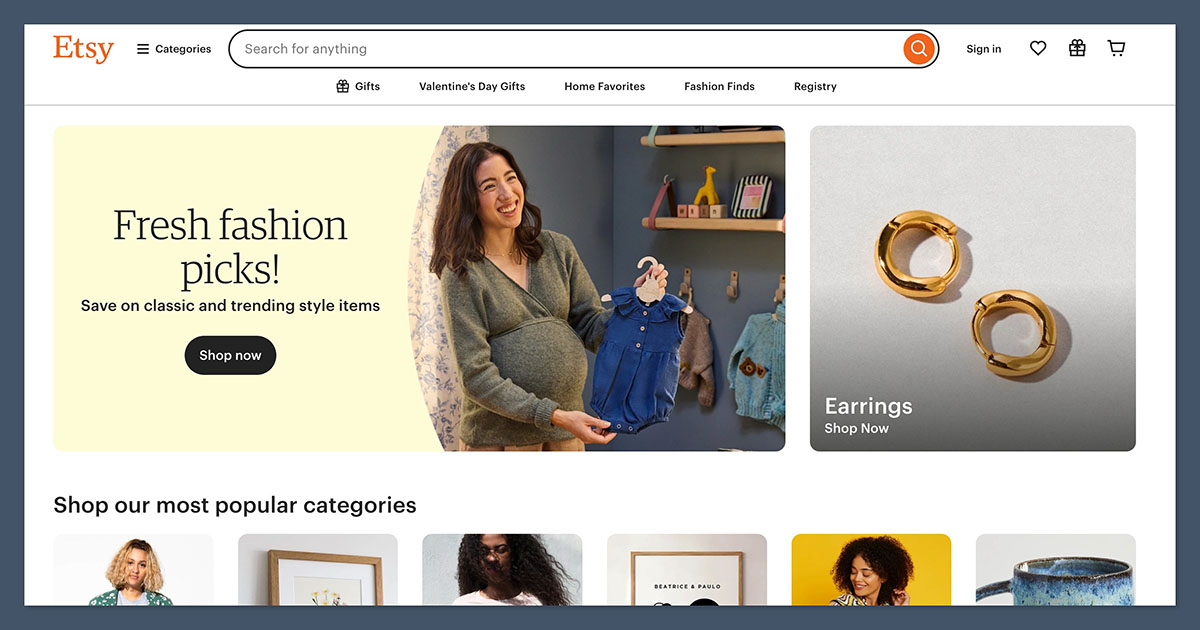
Etsy is still one of the best places to sell digital downloads—especially for creatives and print-on-demand sellers.
People go there to buy digital files like wall art, SVGs, and planners every single day.
Pros:
- Etsy brings free buyer traffic through search, even if you don’t have an audience yet.
- You can rank products by using keywords in titles and descriptions.
- The setup is beginner-friendly and doesn’t require a website.
Cons:
- Etsy takes a cut of every sale, and it can add up fast.
- You have limited control over branding, upsells, or collecting emails.
- Accounts can be shut down without warning, even if you follow the rules.
Pricing:
- $0.20 per listing
- 6.5% transaction fee
- 3% + $0.25 payment processing fee (US)
- Optional Offsite Ads fee (12–15% if enabled)
You don’t pay a monthly fee, which makes it low-risk. For $5–$10, you can get your first 25–50 listings live and test your ideas fast.
Bottom line:
Etsy is ideal if you’re just starting out, want built-in traffic, and are selling print-on-demand or design-based digital files.
2. Gumroad
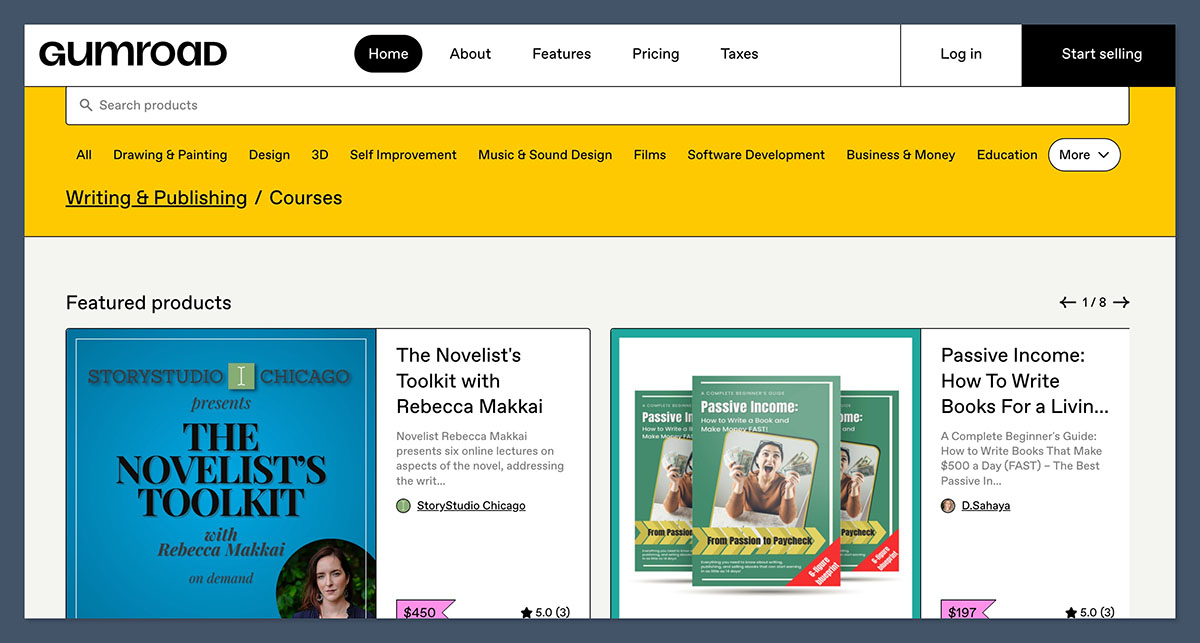
Gumroad is popular among creators selling ebooks, guides, music, templates, and other simple downloads.
Pros:
- Gumroad lets you launch a product quickly without needing a website.
- It delivers files automatically and handles customer support basics.
- You can start completely free with no setup cost.
Cons:
- The 10% fee on the free plan can eat into your profit margin.
- There’s very little room to customize the look and feel of your page.
- You don’t get built-in ecommerce tools like upsells or email sequences.
Pricing:
- Free plan: 10% per sale
- Pro plan: Starts at $10/month, lowers fees to 3.5% + $0.30
- No listing or setup fees
Gumroad Pro also gives you access to custom domains, analytics, and the ability to remove Gumroad branding from your checkout pages.
Bottom line:
Gumroad is best for creators who want a simple way to sell digital products without a store or tech setup.
4. Payhip
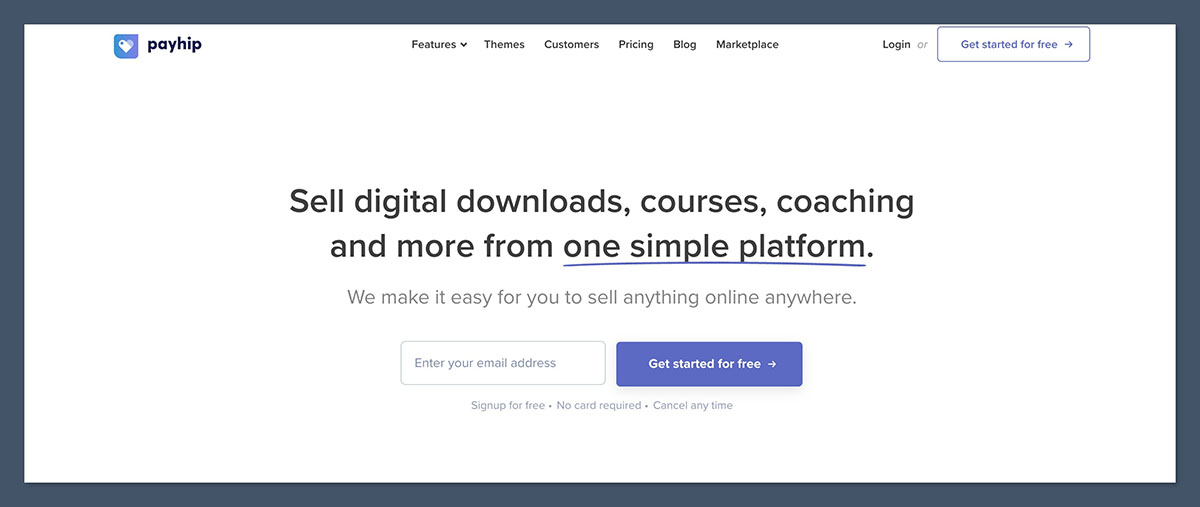
Payhip is one of the simplest and most cost-effective platforms for digital products, courses, and memberships.
Pros:
- Payhip lets you sell digital products without any upfront cost.
- It automatically handles EU VAT, which saves you legal headaches.
- You can also sell courses, bundles, and even offer pay-what-you-want pricing.
Cons:
- There’s no marketplace traffic, so you’ll need to promote your store yourself.
- Fewer integrations and design controls than Shopify or WooCommerce.
- Advanced features like email marketing are limited to higher plans.
Pricing:
| Plan | Monthly Fee | Transaction Fee | What You Get |
|---|---|---|---|
| Free | $0 | 5% per sale | Unlimited products, storefront, VAT |
| Plus | $29/month | 2% per sale | Custom domain, branding removal |
| Pro | $99/month | 0% per sale | Affiliate tools, full customization |
All plans include digital delivery, analytics, and basic marketing tools.
Bottom line:
Payhip is perfect if you want to sell digital products with no upfront cost and prefer a clean, user-friendly dashboard.
5. Creative Market
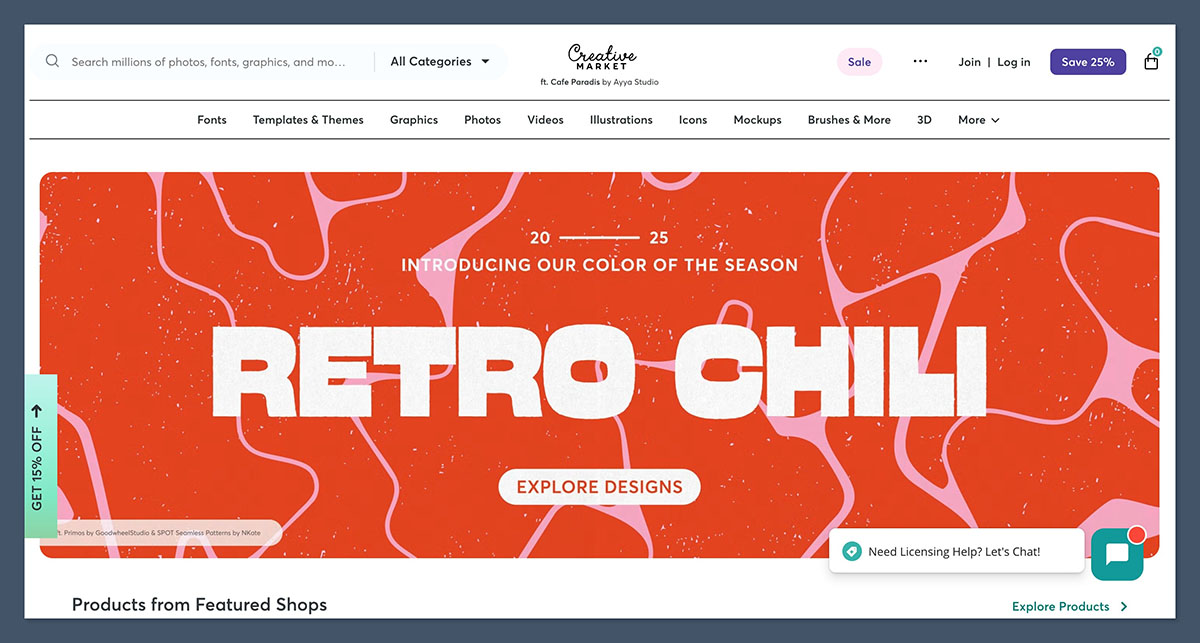
Creative Market is a digital marketplace tailored for design-heavy products like fonts, templates, and mockups.
Pros:
- You get access to a buyer audience already searching for creative assets.
- The platform gives you credibility as a designer or brand builder.
- You can earn passive income once your assets are listed.
Cons:
- Creative Market takes a 40% commission on every sale.
- You must apply and be accepted before you can start selling.
- There’s no ability to collect emails or build a customer list.
Pricing:
- No listing or monthly fee
- 60/40 revenue split (you earn 60%)
- Payments are sent via PayPal or Payoneer
There are no premium plans, but the tradeoff is in the high commission rate.
Bottom line:
Creative Market is best for designers who want access to an audience of buyers looking for premium digital assets.
6. WooCommerce + WordPress
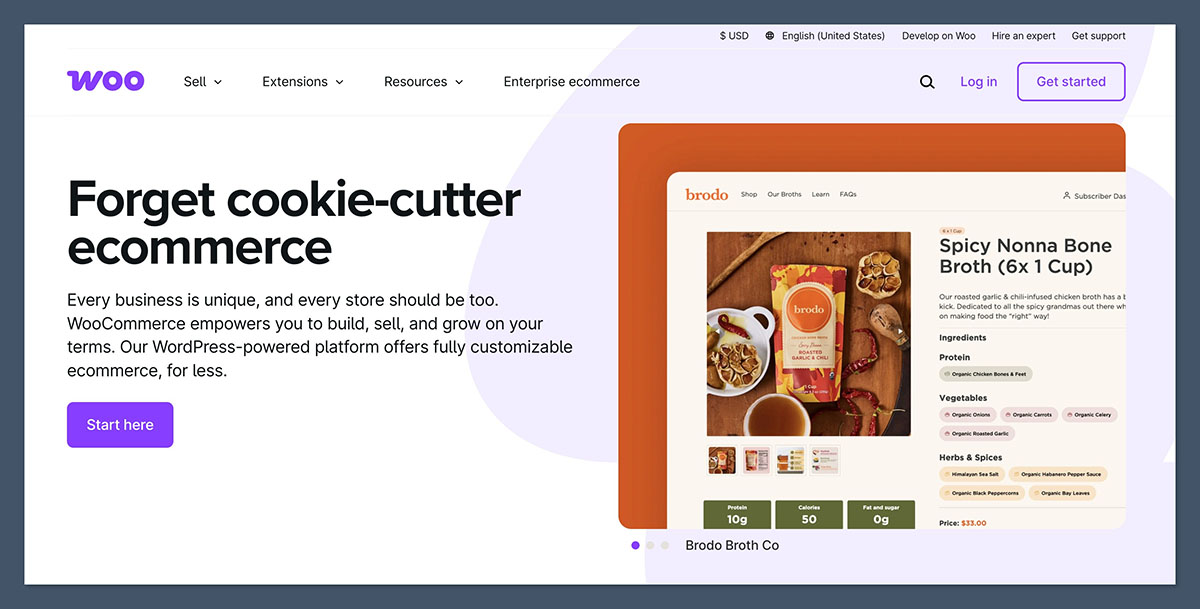
WooCommerce is a plugin that turns your WordPress site into a full-featured digital store.
Pros:
- You have total control over your store, products, and checkout process.
- It’s open-source and can be customized however you want.
- There are thousands of plugins and themes to expand functionality.
Cons:
- You need to manage your hosting, security, and updates.
- There’s more tech involved, which can be overwhelming for beginners.
- No built-in traffic—you’ll need a blog, SEO, or paid traffic strategy.
Pricing:
- WooCommerce plugin: Free
- Hosting: Around $5 to $30/month depending on provider
- Domain name: ~$10 to $15/year
- Theme: Free or $20–$100 (optional premium themes)
- Payment processing: Stripe or PayPal (typically 2.9% + $0.30 per sale)
Although it takes more work upfront, WooCommerce gives you total flexibility over the long run.
Bottom line:
WooCommerce is ideal if you’re already on WordPress and want to fully own your ecommerce setup without platform limits.
7. Sellfy

Sellfy gives creators an all-in-one digital storefront that includes print-on-demand and subscriptions too.
Pros:
- You can sell digital, physical, and subscription products from one dashboard.
- Email marketing, upsells, and discount codes are built-in.
- The interface is clean and beginner-friendly.
Cons:
- You don’t get marketplace traffic—you must promote your own store.
- It lacks deep customization and third-party integrations.
- There’s a monthly cost regardless of how much you sell.
Pricing:
| Plan | Monthly Fee | Features Included |
|---|---|---|
| Starter | $29/month | Unlimited products, discount codes, simple analytics |
| Business | $79/month | Cart abandonment, upsells, 10k emails, branding removal |
| Premium | $159/month | 50k emails, white-label, product migration, priority support |
No transaction fees. All plans include unlimited products and bandwidth.
Bottom line:
Sellfy is a solid pick if you want a simple but complete store for selling digital goods without plugins or coding.
8. Ko-fi / Buy Me A Coffee
These platforms were built for creators but now support digital product sales alongside donations and memberships.
Pros:
- You can sell products, accept tips, and run memberships on the same platform.
- No monthly fee if you stick with the free tier.
- The setup process takes less than 30 minutes.
Cons:
- Limited storefront features—better for small-scale sales.
- No real ecommerce customization options.
- It’s not built to scale with large catalogs or advanced products.
Pricing:
| Plan | Monthly Fee | Platform Fee | Features |
|---|---|---|---|
| Ko-fi Free | $0 | 0% | Sell files, accept tips, offer memberships |
| Ko-fi Gold | $6/month | 0% | Analytics, custom branding, scheduled content |
| BMAC | $0 | 5% | Sell downloads, accept donations, paid posts |
Payment processing via Stripe/PayPal still applies on all transactions.
Bottom line:
Ko-fi or Buy Me A Coffee is perfect for small creators or artists who want a casual, no-fuss way to sell digital files to fans.
Selling Print-on-Demand Digital Files
If you’re already running a print-on-demand store, adding digital downloads is a smart way to increase revenue without extra fulfillment costs.
Examples of POD digital products:
- Printable wall art
- T-shirt design files
- Mockup templates
- Custom planner inserts
- Digital stickers or SVGs for cutting machines
Digital files can be offered standalone or bundled with physical items.
For example, you can sell a printable version of your physical planner, or offer SVG files for people who want to use their own cutting machines.
Top platforms for POD digital files:
- Etsy
- Payhip
- Shopify
- Sellfy
If you’re using a tool like Printful or Printify for physical POD, you can combine those with Shopify or WooCommerce and add digital products to your store easily.
Just make sure to clearly label your listings so customers know they’re buying a download, not a shipped item.
Marketplaces vs. Owning Your Store
Let’s compare both sides.
Marketplaces (Etsy, Gumroad, Creative Market):
- Faster traffic
- Lower startup costs
- Easier to validate product ideas
- Limited branding control
- You don’t own the customer
Your own store (Shopify, WooCommerce):
- Full control
- You own the email list and data
- Better long-term profits
- Higher setup effort
- You have to drive your own traffic
The smart approach is to use a marketplace to test and validate, then move to your own platform once you’ve found traction.
Smart Ways to Boost Your Digital Sales
Even if you’re starting from scratch, there are several ways to build momentum.
Try these proven strategies:
- Bundles: Sell 3–5 products in one pack for a higher perceived value
- Email opt-ins: Offer a free file to grow your email list
- Sales and discounts: Limited-time offers drive urgency
- Upsells: Sell a template pack, then offer premium extras
- Use social proof: Share testimonials or reviews on your product pages
- Start on Etsy, scale on Shopify: Use early profits to invest in your brand
You don’t need a big audience to get results—just a good product, clear listings, and a plan to grow.
Final Thoughts
Digital products are one of the most flexible and profitable models for online businesses today.
Whether you’re an ecommerce seller or print-on-demand creator, there’s a platform out there that matches your goals.
I recommend starting with one or two platforms—like Etsy for quick validation and Shopify for long-term growth.
Test your products. Track your results. Then double down on what works.
Selling digital products isn’t a magic bullet, but with the right approach, it can be a low-overhead, high-margin income stream that grows with you.
